Technical Analysis: Definition, How it works, Principals, Components, Uses & Limitation
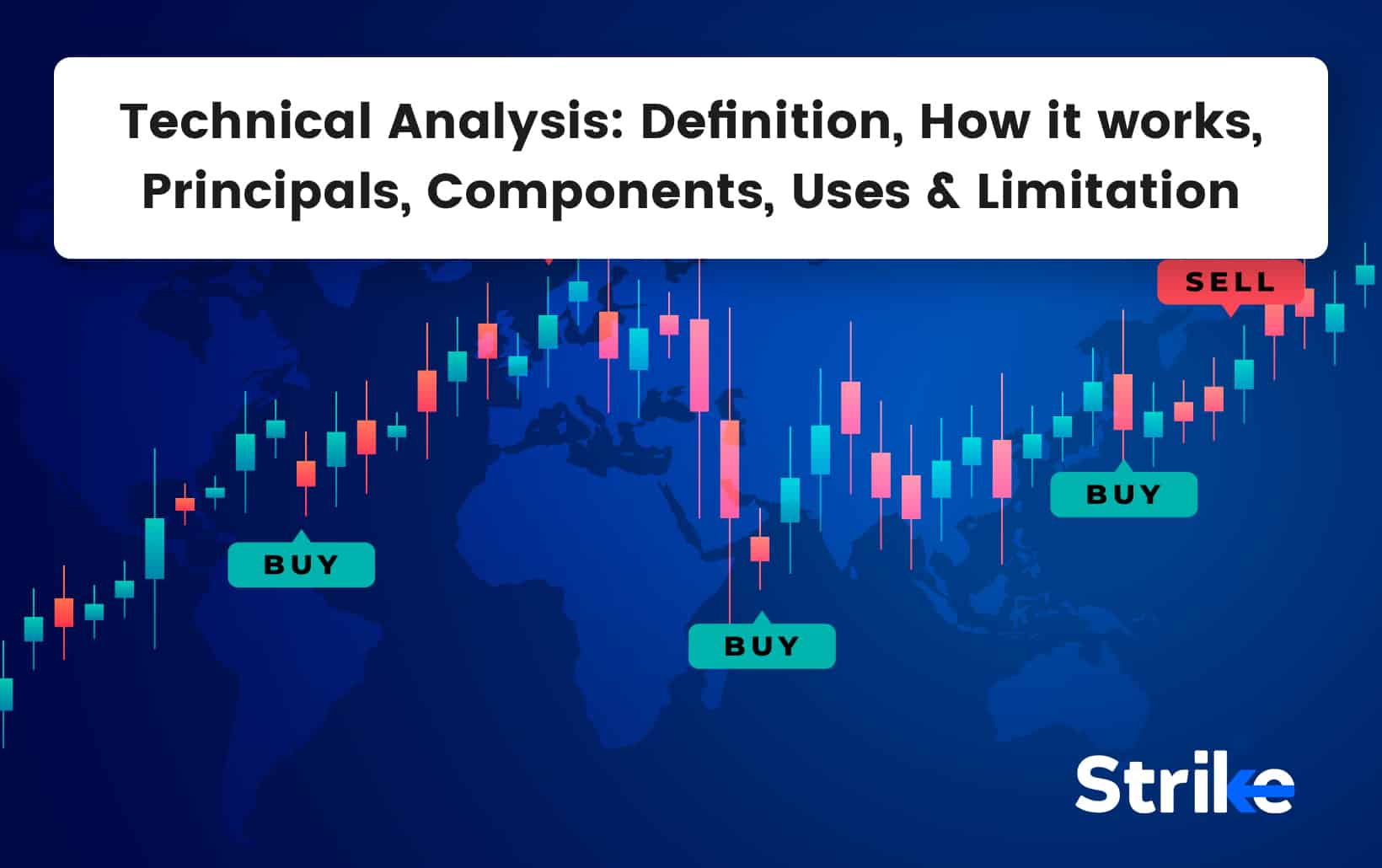
Technical analysis is a trading discipline employed to evaluate investments and identify trading opportunities in the financial markets. Technical analysis studies historic price and volume data to identify recurring patterns and trends that forecasts market behavior going forward.
The fundamental principle of technical analysis is that a security’s current price reflects all relevant information about it. Therefore, analyzing graphs of price movements and trading volume over time provide clues as to where the market might be headed in the future. Technical analysts use various techniques to identify emerging patterns and predict short-term directional changes in the market. Common techniques include chart analysis, trend analysis, oscillators, and trading indicators such as moving averages.
By identifying emerging patterns, technical analysts aim to predict the probability of their continuation or reversal. Technical analysis is a widely used tool by investors and traders of all types to complement or supplement traditional fundamental analysis methods. While it does not directly analyze a company’s financials, operations, or competitive positioning, technical analysis is valuable as a predictive tool to help identify trend reversals and momentum opportunities.
It also helps traders enter and exit the markets at opportune times and manage risk. However, technical analysis does not provide a clear picture of a security’s intrinsic value and struggles to predict major changes in market sentiment or macroeconomic forces. So, it works best as a supplement to fundamental analysis rather than the sole driver of investment decisions.
What is technical analysis?
Technical analysis is a method of evaluating securities and attempting to predict price movements and future market trends by studying historical market data, primarily price and volume. Technical analysts look at historical price charts and various technical indicators to analyse market conditions and identify trends. The goal is to try to predict future price movement and time trades profitably.
Technical analysis operates under the core assumptions that current prices reflect all available information, prices tend to trend in one direction, and historical price patterns repeat due to enduring human psychology. Technicians believe they are able to identify future market moves by studying past price charts to spot trends and well-known formations that signal high-probability reversal points. These reversal points usually occur in an area of higher demand or supply. Technical analysts try to identify stocks that have a greater probability of reacting from these areas, combine different confluences, calculate risk and opportunity and punch a trade.
What is the history of technical analysis?
Technical analysis has originated in the late 19th century. It was initially used for trading commodities. In the 1880s, Charles Dow, founder of the Wall Street Journal, was the first to create stock market indices; Dow Jones is an index which is named after him and he developed the Dow Theory for analysing trends.
Technical analysis really took off in the early 20th century as more mathematical indicators were introduced, like relative strength, momentum, rate of change, and volatility. Books by pioneers like Edwards, Magee, Murphy, and Pring established core technical principles still used today. Computers and digital charting in the 1980s made technical analysis more widespread and efficient.
Today, technical analysis is used globally by traders of all financial instruments, including equities, futures, forex, and cryptocurrencies. While technology has made it more sophisticated, the core principles remain the same – studying historical charts and market data to identify trade opportunities. Technical analysis has evolved from a niche technique to a widely accepted tool for analysing market movements and making data-driven trading decisions. Recent innovations in machine learning and algorithmic trading have also built on the foundations of classic technical analysis.
What are the core principles of technical analysis?
The core principles of technical analysis in relation to the stock market are that prices discount all known information, reflect the psychology of market participants in the form of fluctuating prices, move in trends, and tend to repeat in historically identifiable patterns.
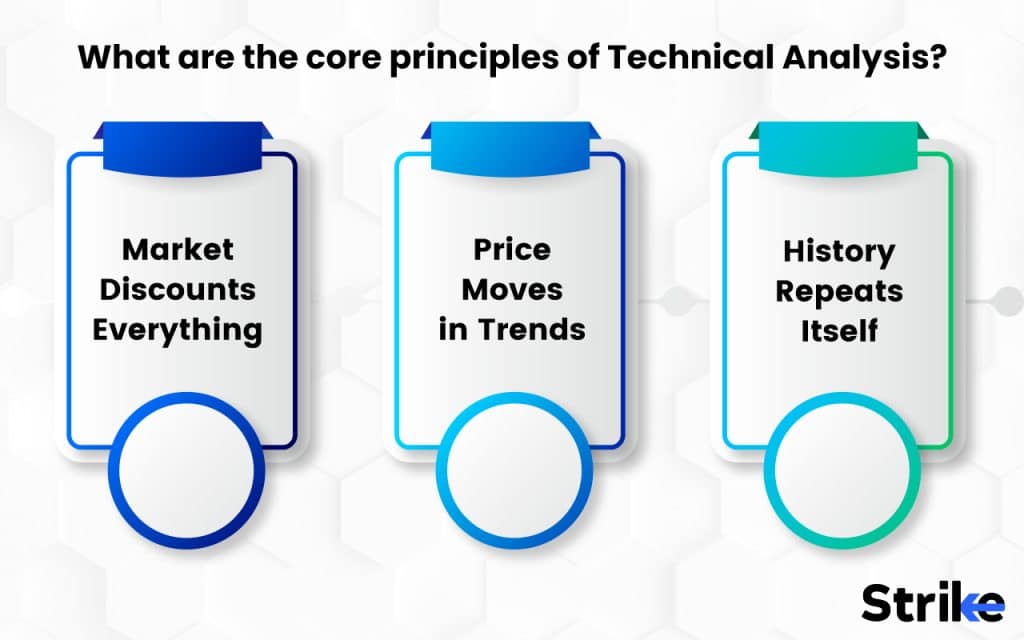
1.Market Discounts Everything
The first core principle of technical analysis is that the market discounts everything. This means that the price of a stock already reflects all known information that could impact its value.
It is reflected by the fundamentals like earnings, dividends, assets, macroeconomic factors, and even human emotions like greed and fear. The efficient market hypothesis states that stock prices follow a random walk as new information comes to light, and technical analysts believe it is difficult to predict or speculate the future price of a stock based on fundamental metrics.
Instead, technical analysts focus on the price chart as a reflection of the market’s collective knowledge. The chart shows how investors have reacted to new information over time, revealing the current supply and demand dynamics. Past price performance and market psychology are thus the best indicators of how investors sometimes behave in the future. Technical analysis aims to capitalize on areas where the price has the potential to react to the information regarding the current market price and the arrival of it in these areas.
2. Price Moves in Trends
The second core principle of technical analysis is that prices tend to move in specific trends. Once this trend emerges, it is more likely for the stock to keep moving in that direction unless and until the counter positions are built and the psychology of market participants is changed thus the analysts assume during a trend the possibility of a sudden reversal is less. This is often attributed to market psychology – when prices start rising rapidly, it attracts more buyers as people rush to join the uptrend, becoming a self-fulfilling prophecy.
There are three types of trends – uptrends, downtrends, and sideways trends.
An uptrend happens when prices make a series of higher highs and higher lows. This reflects increasing demand as more buyers are willing to pay higher prices. An uptrend is usually represented as a BULL move.
A downtrend occurs when prices begin falling and continue making lower lows and lower highs, indicative of weaker demand. A downtrend is represented as a BEAR move.
Finally, a sideways trend happens when the price swings up and down within a range, showing a balance between supply and demand. During a sideways market, BULLS and BEARS are fighting to get control over the price dynamics.
3. History Repeats Itself
The third principle of technical analysis is that history tends to repeat itself in the financial markets. While prices sometimes appear random on short timeframes, over longer periods they exhibit repeating patterns and tendencies. These repetitive price formations reflect market psychology and human behavior patterns that persist over time. Technical analysis aims to identify times when the market becomes overextended and is likely to revert back to its mean or historical average.
For example, after a strong uptrend, prices often become overbought as enthusiasm causes the rally to exceed what current fundamentals support.
This paves the way for a correction as buyers become exhausted, profit-taking sets in, and the price reverts back toward its mean. The same goes for oversold conditions after a downdraft, which sets up a bounce back up for the stock. Technical analysts study price charts to spot similar historical patterns that provide clues about how investors are likely to respond in the future.
From chart patterns like head and shoulders to indicators like momentum oscillators, technicians use various tools to measure the intensity of a price swing. This allows them to assess when the move has likely gone too far too fast, making it primed for a reversal. By quantifying market psychology, technical analysis aims to profit from situations when current investor enthusiasm or pessimism reaches extreme levels that are unlikely to be sustainable. The repetitive nature of human emotion and mob mentality creates identifiable chart patterns that are taken advantage of by studying market history.
How does technical analysis work?
Technical analysis works by studying market price charts and other data to identify patterns and trends that sometimes help predict future price movements. Analysts rely on the assumption that trading activity tends to repeat itself over time. There are two main approaches in technical analysis: charting and indicator-based.
Chartists look at price charts over various time frames to identify chart patterns that could signal a trend change or continuation. Examples of chart patterns are head and shoulders, triangles, flags, and cups and handles. The idea is that certain patterns tend to imply certain future price actions based on how they have played out historically. For example, a head and shoulders pattern where a peak is flanked by two smaller peaks on either side often signals a reversal of the uptrend. Chartists look to enter trades when a pattern completes and a breakout occurs. They also watch for support and resistance levels where the price has struggled to break through as potential areas for a reversal.
What are the main components of technical analysis?
The main components of technical analysis are the study of price charts, technical indicators, and volume to identify trends, reversals, support/resistance levels, and overbought/oversold conditions in the stock market.
Dow Theory
Dow theory in technical analysis asserts that the market discounts all known information, which has three types of trends, requires volume confirmation of trends, needs confirmation between indices, and only reverses on breaks of previous reaction highs/lows. The following are the six main components of Dow theory in technical analysis.
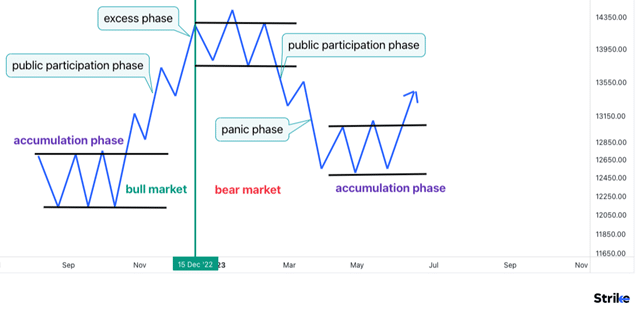
Dow theory in technical analysis asserts that the market discounts all known information, has three types of trends, requires volume confirmation of trends, needs confirmation between indices, and only reverses on breaks of previous reaction highs/lows. The following are the 6 main components of Dow theory in technical analysis.
The first component is that the market discounts everything. This means share prices reflect all known information and events that could impact the valuation of the company. Once news is released, it is quickly incorporated into the share price.
The second component is that the market has three trends – major, intermediate, and minor. A major trend lasts longer than a year. An intermediate trend lasts from several weeks to several months. A minor trend lasts from days to weeks. Recognizing the type of trend helps traders position themselves.
The third component is that major market trends have three phases – accumulation, public participation, and distribution. During accumulation, experienced investors start building positions. During public participation, the masses enter the trend. During distribution, experienced investors begin offloading positions.
The fourth component is that volume must confirm the trend. Volume should increase during an uptrend as more buyers enter the market. Volume should decrease during a downtrend as sellers dominate. Volume confirms the conviction behind a trend.
The fifth component is that major market trends should be confirmed by secondary indices. For example, the Dow Jones Industrial Average and the Dow Jones Transportation Average should confirm each other’s moves. It signals a potential trend change if they diverge.
The sixth component is that a definitive trend reversal requires a break of the previous reaction high or low. Until this decisive break occurs, the existing trend is considered intact despite warning signs. This avoids anticipating reversals prematurely.
Trends
In technical analysis, the three types of market trends are uptrends with higher highs and higher lows, downtrends with lower highs and lower lows, and sideways trends moving between support and resistance levels.
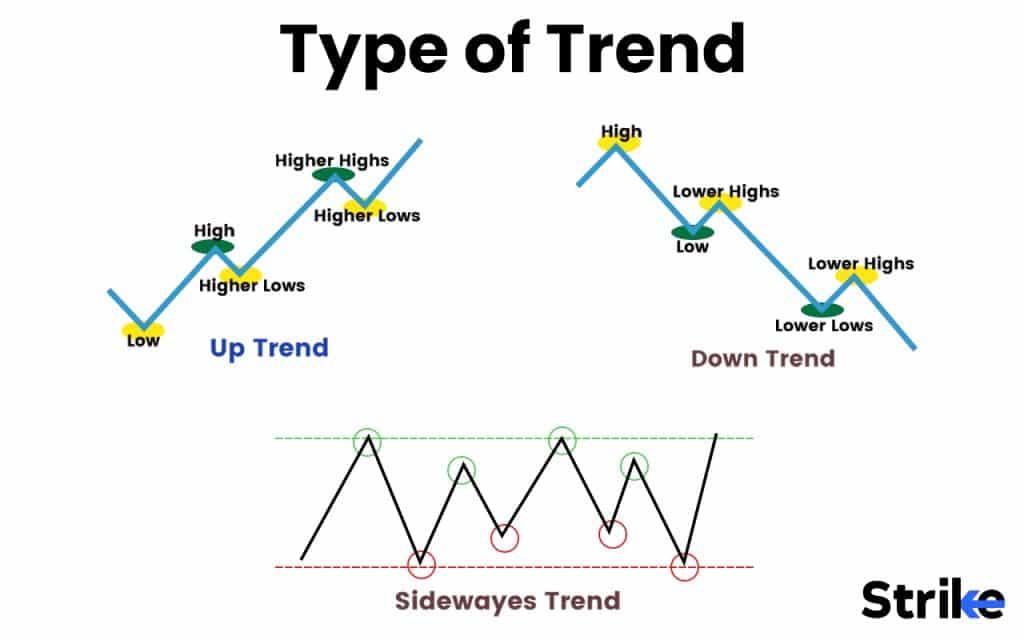
Uptrend
An uptrend occurs when the price of a security sees a series of higher highs and higher lows. This means each successive peak and trough is higher than the previous one, showing steady gains over time. The trendline drawn connecting these rising lows represents the uptrend line. This upward trajectory indicates bullish sentiment and momentum.
Downtrend
A downtrend is the opposite of an uptrend, characterized by a series of lower highs and lower lows. Each successive peak and trough is lower than the previous one, reflecting steady declines over time. The trendline drawn connecting these falling peaks represents the downtrend line. This downward trajectory indicates bearish sentiment and momentum.
Sideways Trend
A sideways trend occurs when the price is moving within a range, bounded by an upper resistance level and a lower support level. The price keeps bouncing between these two levels, unable to break out in either direction. This indicates a period of consolidation as if buyers and sellers are in equilibrium. Trading activity subsides as momentum dissipates.
Recognizing the type of trend is key for traders looking to capitalize on momentum and enter at opportune points. Analyzing these trends and trend lines is an essential part of technical analysis.
Types of charts
The main types of charts used in technical analysis are line charts, bar charts, candlestick charts, point and figure charts, Renko charts, and Heikin-Ashi charts.
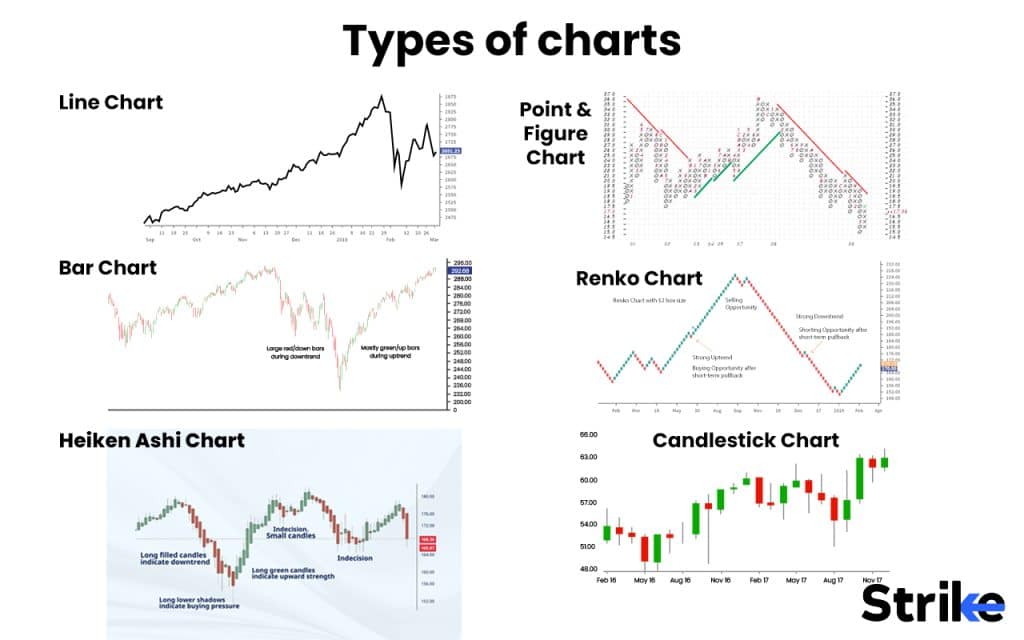
- Line Charts: Connect closing prices over time to show basic price movement. Help visualize overall trend and direction but lack detailed price information.
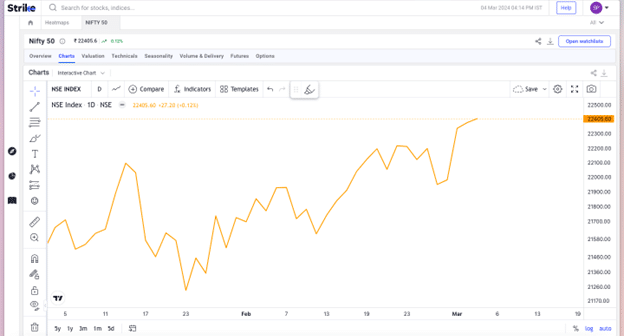
- Bar Charts: Show open, high, low, and close for each period. Bar charts provide more price data than a line chart. The top represents the high, the bottom is the low, and the horizontal lines on the left and right are open and closed.
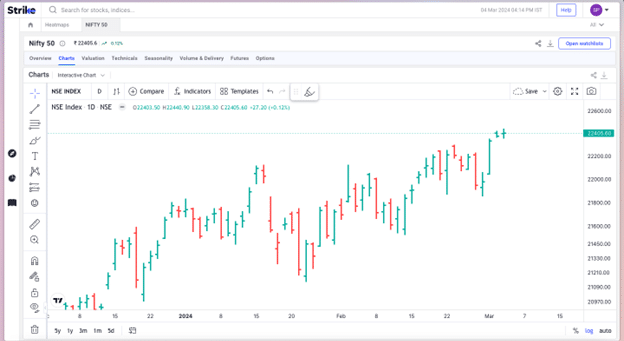
- Candlestick Charts: Resemble bar charts but use boxes called ‘candles’ to show price range and closing price. Candlesticks are colored to indicate if the price rose or fell in that period. Considered to provide the most insight into price action.
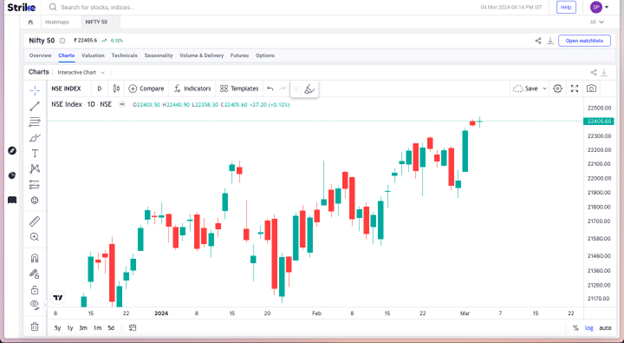
- Point and Figure Charts: Plot price movements without regard to time. Column X shows rising prices, and column O shows falling prices. Filter out non-meaningful price moves and focus on direction and reversals.
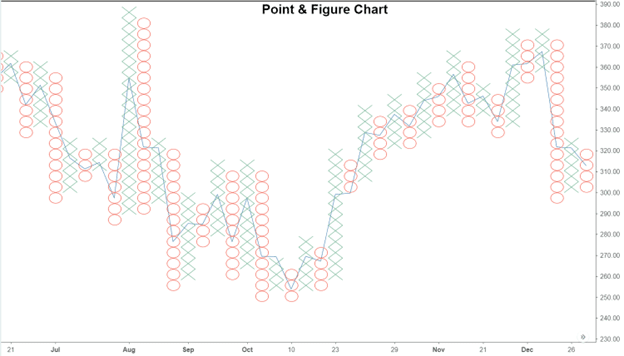
- Renko Charts: Similar to point and figure charts, but plots bricks in unit increments when the price reaches specified targets. Bricks are colored for rising and falling in renko charts. Filters noise and highlights trends.
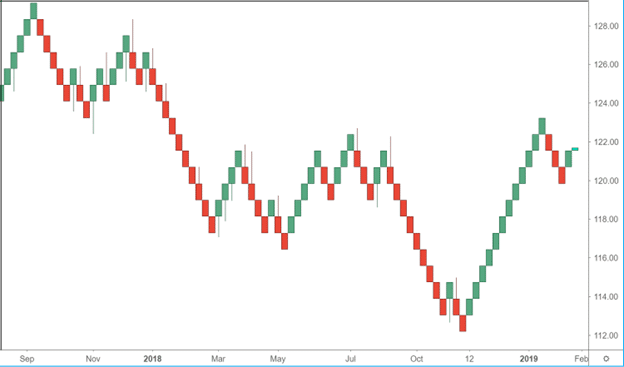
- Heikin-Ashi Charts: Candlestick charts that use averaging to smooth price data and filter noise. Heiken ashi charts help clarify trend direction and momentum.
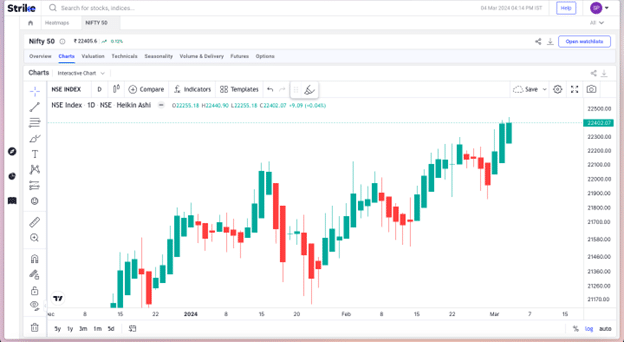
Trading timeframe
The main trading time frames in technical analysis are scalping for seconds to minutes, day trading for a day or less, swing trading for days to weeks, and positional trading for weeks to months.
- Scalping
Scalping involves very short-term trades lasting seconds to minutes, taking advantage of small price movements. Scalpers look for quick profits but have a high volume of trades. Common scalping tools include tick charts and 1-minute charts. They usually take advantage of gamma or vega spikes and mostly trade in the options segment.
- Day Trading
Day trading involves taking trades that last for a day or less, closing all positions by the end of the trading day. Day traders use intraday charts like 1-minute, 5-minute, and 15-minute charts to find opportunities and exit the same-day. Day traders trade in the equity and Futures and Options segment.
- Swing Trading
Swing trading aims to capture swings in price momentum over a period of days to weeks. Swing traders use daily, 4-hour, and hourly charts to identify potential opportunities and hold for the short-term. Positions last 2-6 days typically. Swing traders mostly trade in equity and sometimes futures.
- Positional Trading
Positional trading focuses on taking trades based on longer-term technical analysis for weeks to months. Technical tools like daily, weekly and monthly charts are used. Requires patience to hold positions and wait for favorable price movements.
Selecting the appropriate time frame is critical based on one’s trading objectives, style, and risk appetite. Shorter timeframes require more activity while longer timeframes involve more patience. Positional traders do not trade in the derivatives segment. They maintain their positions in the equity segment.
Support & Resistance
Support and resistance are price levels where buying or selling increases, respectively slowing or reversing price momentum, and they are key concepts in technical analysis.
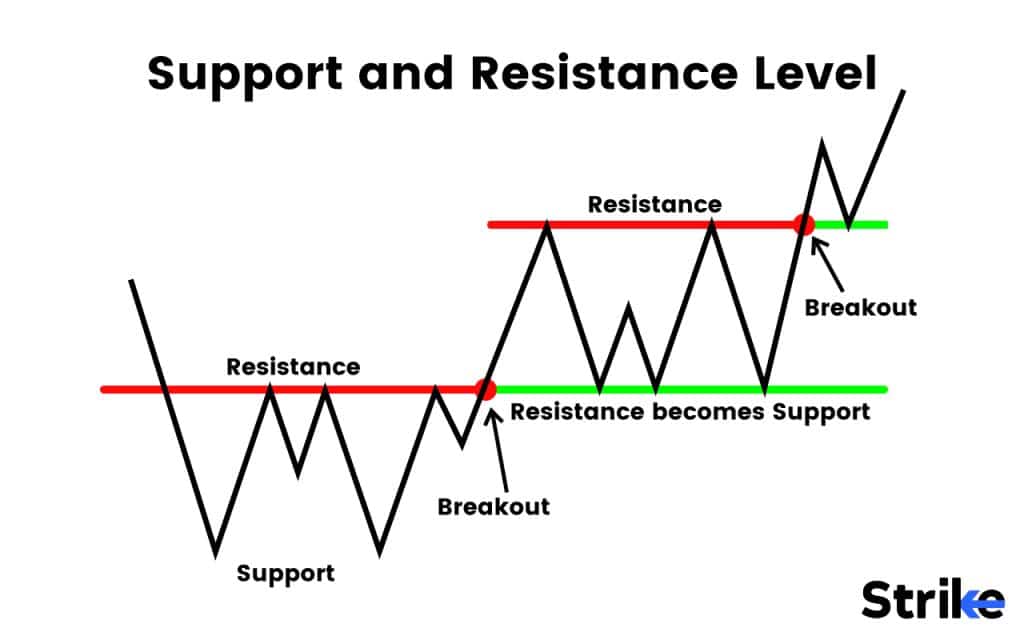
Support
Support levels represent prices where downward momentum is likely to slow or reverse. As the price drops to a support level, buying activity usually increases which prevents the price from falling further. This happens because support levels represent price zones where investors see value and become willing buyers. Former resistance levels often become support levels when broken. A support level usually signifies a greater demand area. Anyway, If a price is arriving at a support level multiple times, the strength of this support level weakens and the possibility of the break of support price increases, thus a time may arrive when this support level finally breaks down and it may become a new resistance level herewith.
As you can see an example of the Axis Bank Daily chart has been uploaded. The dark blue horizontal line suggests a support price.

Resistance
Resistance levels represent prices where upward momentum is likely to stall or reverse. As the price rises to a resistance level, selling activity usually increases which prevents the price from rising further. This selling activity is assumed as a supply’ area. Anyway, If a price arrives at a resistance level multiple times, the strength of this resistance level weakens and the possibility of the break of the resistance price increases, thus a time may arrive when this resistance level finally breaks up and it may become a new support level herewith.
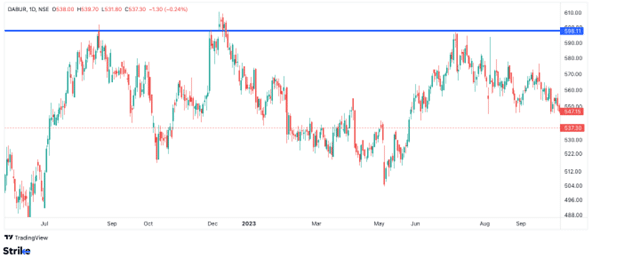
As you can see in the above mentioned picture, DABUR’s daily chart is uploaded. The dark blue horizontal line represents a supply level or a resistance price line. The price reaching that area, showed signs of profit-taking and supply.
Trendlines
Trendlines connect either rising bottoms or falling peaks on a chart to highlight uptrends and downtrends respectively, acting as support and resistance for trading opportunities.
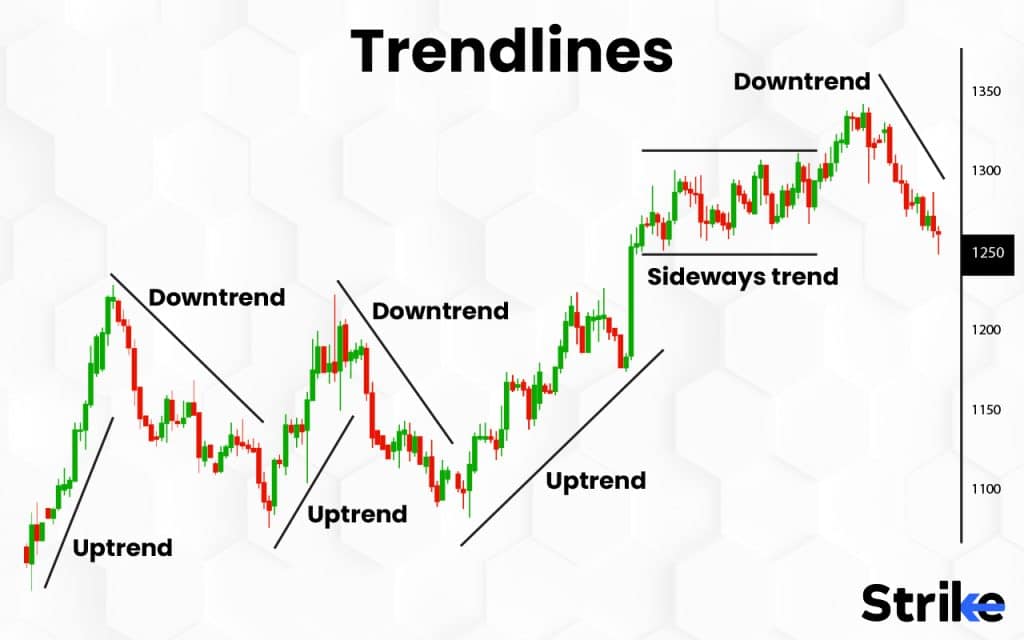
Uptrend Lines
Uptrend lines connect a series of (higher lows) rising bottoms on a chart. They show the upward slope of a stock’s price over time and represent areas of support. Uptrend lines reflect increasing demand for the asset. Traders look to buy around uptrend lines and place stop losses below.
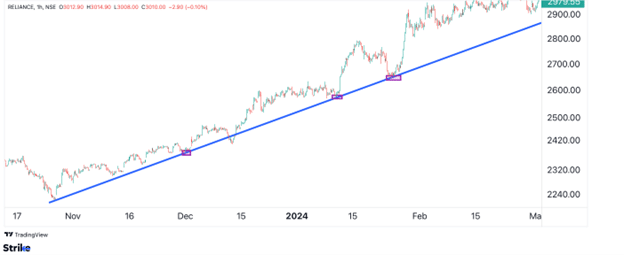
Drawing uptrend lines involves connecting at least 2 or more rising low points on a chart. The line highlights the bullish momentum. Traders wait for pullbacks to these lines to time entries. A break below signals potential trend reversal.
The rectangle box in the image indicates the intersection of price, time and the trend line that has been plotted. Traders use such opportunities to find entries.
Downtrend Lines
Downtrend lines connect a series of (Lower highs) falling peaks on a chart. They depict the downward trajectory of a stock’s price and represent areas of resistance. Downtrends show declining demand for the asset. Traders look to sell around downtrend lines and place stop losses above.
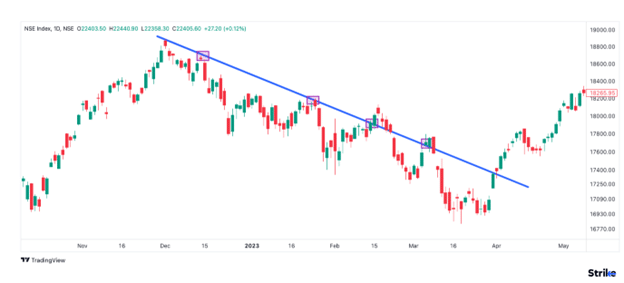
Drawing downtrend lines involves connecting at least 2 or more falling high points on a chart. The line highlights the bearishness. Traders wait for rallies to these lines to exit. A break above signals potential trend change.
The rectangle box in the image indicates the intersection of price, time and the trend line that has been plotted. Traders use such opportunities to find entries.
Trend channels
Trend channels are formed by drawing trendlines connecting the rising tops and bottoms in uptrends or falling tops and bottoms in downtrends to contain price action, or by drawing horizontal lines to connect highs and lows in sideways channels.
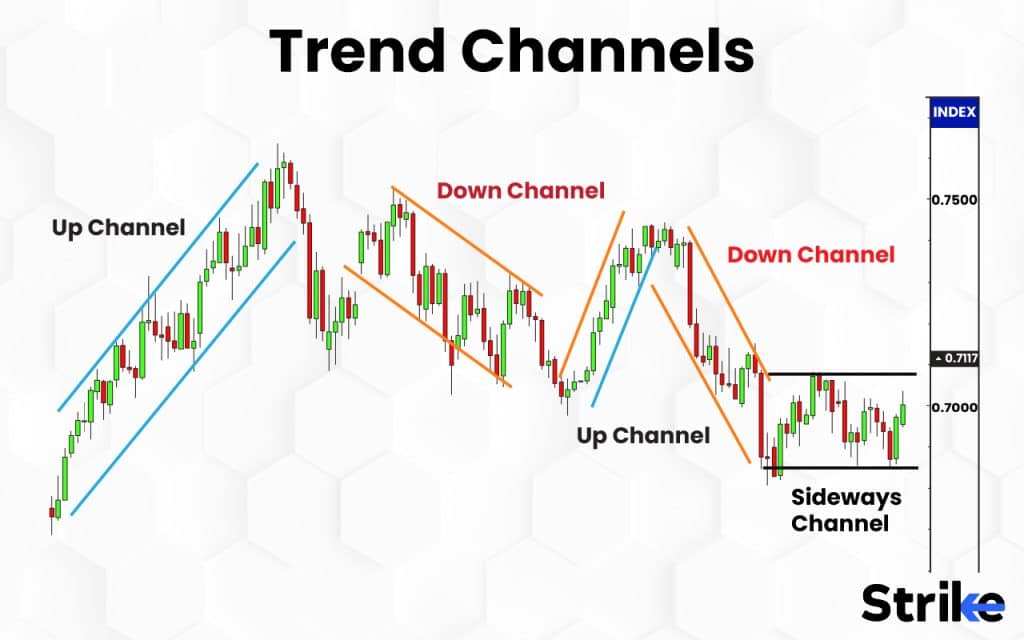
Uptrend Channel
An uptrend channel is formed when trendlines are drawn connecting the rising bottoms and the rising tops of an uptrend. This creates a channel containing the price action. As long as the price remains within the channel, the uptrend is intact.
The bottom trendline connects the lows and acts as support to buy off during pullbacks. The top trendline connects the highs and acts as resistance where some selling could emerge. The channel shows contained price momentum in an upward direction as long as the price continues respecting both trendlines. A break below the bottom trendline signals trend reversal.
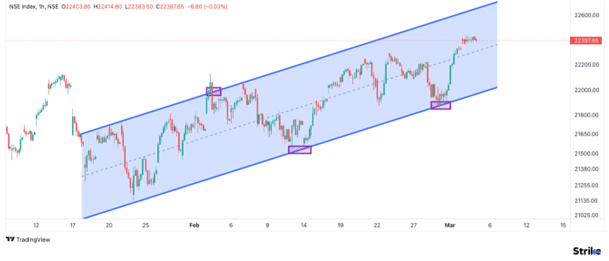
This is a classic example of an uptrend channel plotted for Nifty 50 index. Traders use this channel and the midline in their analysis to find entry models.
Downtrend Channel
A downtrend channel is formed when trendlines are drawn connecting the falling tops and the falling bottoms of a downtrend. This creates a channel encompassing the downtrend. The channel remains valid as long as the price keeps respecting both trendlines.
The upper trendline connects the highs and acts as resistance where selling pressure is expected. The lower trendline connects the lows and acts as support where some buying emerges. The channel contains the downward price action and shows controlled selling momentum until a break above resistance invalidates it.
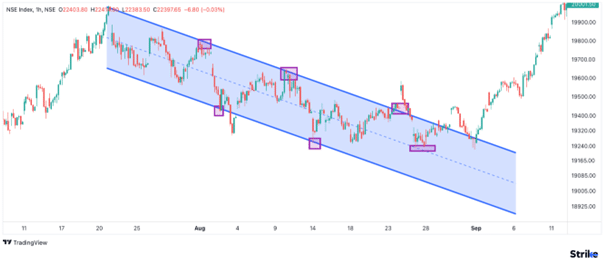
This is a classic example of a downtrend channel plotted for Nifty 50 index. Traders use this channel and the midline in their analysis to find entry models.
Sideways Channel
A sideways channel occurs when the price is ranging between clear support and resistance levels, moving horizontally rather than trending up or down. Channel lines connect the highs and lows containing price.
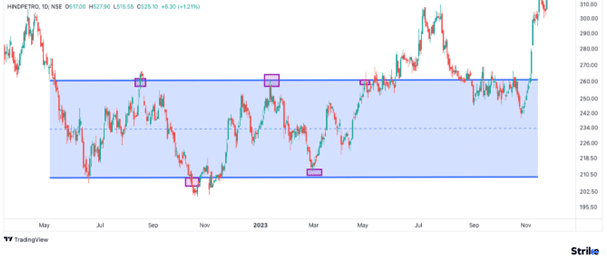
The upper channel line reflects the resistance level capping the price rises. The lower channel line reflects the support level holding up the price declines. The price keeps fluctuating within the boundaries showing trader indecision and lack of momentum in either direction until a breakout happens. An example of a sideways channel is given in the example below, observe how the price managed to fluctuate between the upper resistive level and the lower support level and the same image shows how in the end, the price managed to break the resistance and that resistance converted into a support.
Fibonacci Retracements
Fibonacci retracements are horizontal lines that indicate potential support and resistance levels, commonly used to identify reversal points in trends. They are based on Fibonacci numbers – 0, 1, 1, 2, 3, 5, 8, 13, 21, 34 etc. where each number is the sum of the preceding two.
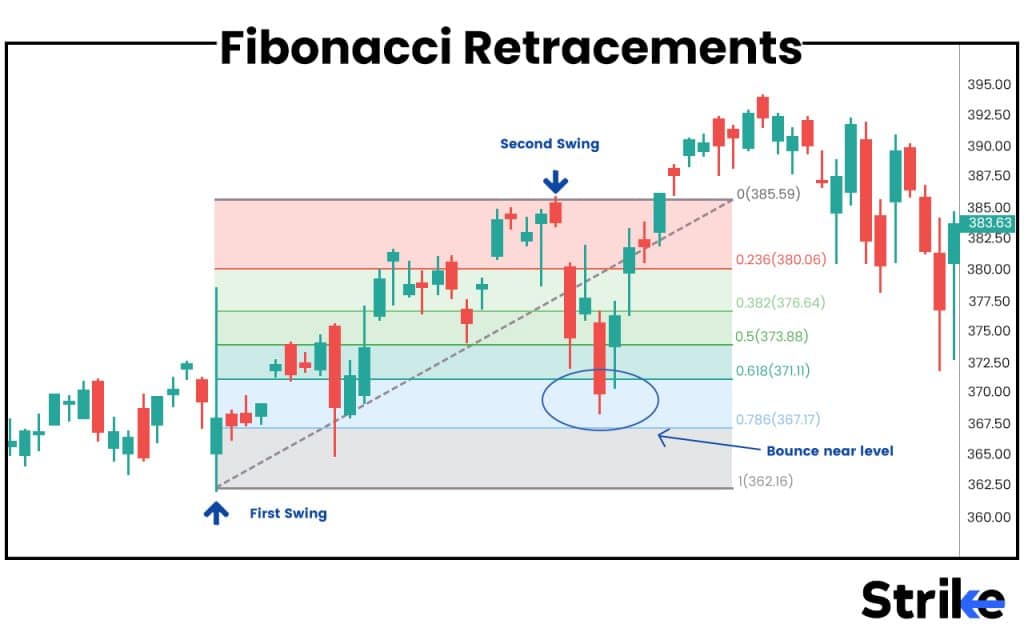
In an uptrend, Fibonacci lines are drawn connecting the low to the subsequent high to target pullback levels. The key retracement levels are 23.6%, 38.2%, 50%, 61.8% representing possible areas of support in a pullback before the trend resumes.
In a downtrend, Fibonacci lines are drawn connecting the high to the following low to identify bounce levels. The main retracement levels are 23.6%, 38.2%, 50%, 61.8% reflecting potential resistance on counter-trend bounces.
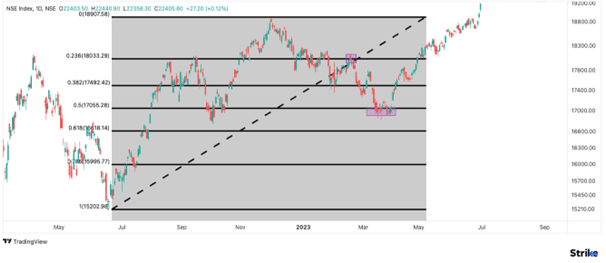
Fibonacci retracements act as potential reversal points because traders expect the pullback to end there and the original trend to resume. They serve as levels for traders to take profit, enter positions, and place stops or targets. 50% retracement is of utmost importance. Even day traders and scalpers scale Fibonacci retracement on impulsive moves to find opportunities. Ofcourse, a proper risk management methodology is applied. They are more reliable when combined with other signals. Mastering Fibonacci techniques enhances trading strategies.
Volume
Volume is a critical indicator in technical analysis that measures the number of shares or contracts traded for a security over a period of time, providing clues about the strength of price moves and potential changes in trends or momentum.
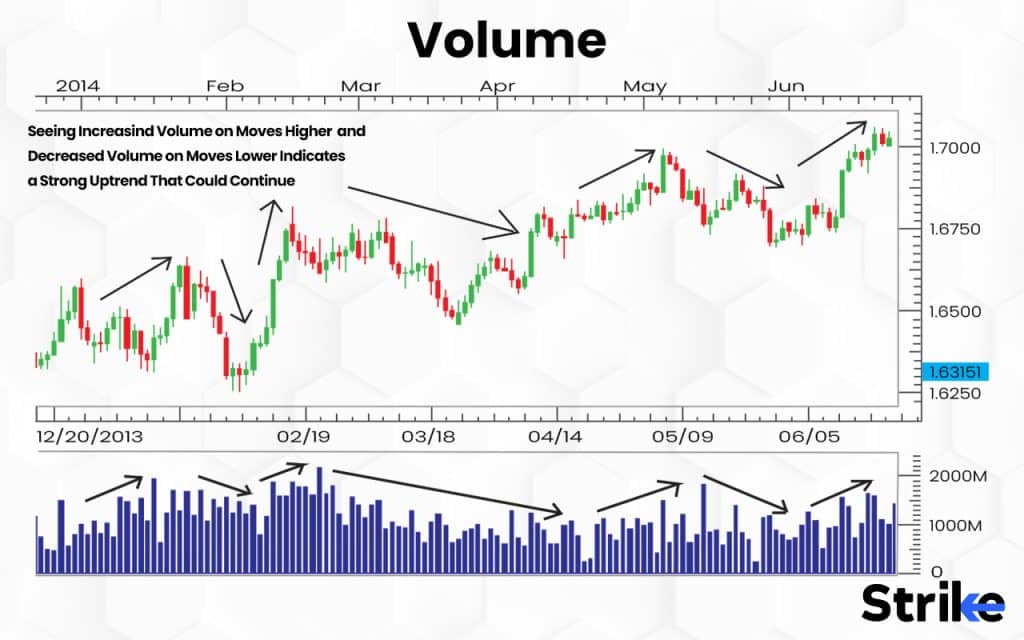
In an uptrend, rising volume confirms the uptrend as it signals increased market interest and buyers are supporting the price gains. Heavy volume on up-days propels the uptrend while lack of volume on down-days indicates limited selling pressure.
In a downtrend, increasing volume confirms the downtrend as rising activity reflects more investors are selling and distribution is occurring. Volume spikes on down-days signal conviction behind the selling while lack of volume on up-days indicates minimal buying interest.
Declining volume during uptrends or downtrends often presages an impending reversal as it reflects waning momentum. A sudden surge in volume signals the start or end of a new trend or marks a potential breakout as fresh capital flows into the security. Analyzing volume surges at key support and resistance levels provides trading insights. Volume-based indicators like OBV and Chaikin Money Flow also aid analysis. In summary, intelligent volume analysis is essential in technical trading.
Still, volume indicators have the potential to give mixed or confusing signals as big players do not disclose the volume or quantity of shares they trade. So a trader should not entirely depend on this indicator.
Indicators
Indicators in technical analysis include trend indicators to evaluate the prevailing price direction, volatility indicators to measure the high-low range, momentum indicators to determine the rate of change, and volume indicators to analyze trading activity.
Trend Indicators
Trend indicators help traders identify the overall direction of the market or asset price. Examples include moving averages, Parabolic SAR, and Supertrend. Moving averages are one of the finest indicators that is considered as leading ones. They are used in any market scenario, scalpers and day traders use extensive moving averages and types of moving averages. Some of the examples include simple and exponential moving averages, which show the prevailing trend direction. Parabolic SAR shows potential reversals with dots above or below the price. Supertrend calculates a trending channel and signals changes.
Volatility Indicators
Volatility indicators measure how wide or narrow the price range is for a security. Examples include Bollinger Bands, Stochastic Oscillator, and Commodity Channel Index (CCI). Bollinger Bands plot standard deviation channels above and below a simple moving average. Stochastic Oscillator measures overbought/oversold levels. CCI gauges price deviation from its statistical mean.
Momentum Indicators
Momentum indicators determine the speed or strength of price movement. Examples include MACD, ADX, ROC, RSI, and Stochastic. MACD calculates moving average convergence/divergence. ADX measures trend strength. ROC analyzes the rate of change. RSI evaluates overbought/oversold levels. Stochastic measures momentum through comparison with the recent range.
Mostly, momentum indicators are lagging indicators, meaning they tend to generate signals usually after the momentum has arrived, not always, but most of the time. Hence, Traders are entirely dependent on momentum indicators, they often neglect the disadvantages of these. They must be combined with price action and other indicators to solidify their prediction about the stock.
Volume Indicators
Volume indicators use trading activity and volume to confirm price trends or forecast changes. Examples include On Balance Volume (OBV) and Chaikin Oscillator. OBV calculates cumulative volume flow. The Chaikin Oscillator computes volume momentum over time. Analysing volume helps validate or question price action.
Chart patterns
There is a constant flow of liquidity or money in a stock in the form of prices in the stock market. This flow is generally obtained due to the demand and supply and psychology of market participants. This demand and supply plots the prices with respect to the time and creates specific patterns. These patterns are interpreted in the form of continuation patterns signaling a pause in the current trend such as triangles, flags etc, and reversal patterns indicating a trend change, such as head and shoulders and double tops/bottoms.
Continuation Patterns
Continuation patterns signal a pause or consolidation in the existing trend which is likely to continue in the same direction after the pattern completes. Examples include triangles, flags, pennants and rectangles. These patterns reflect a battle between bulls and bears but the original trend eventually emerges victorious after the pattern breaks.
This continuation trend occurs due to the break; which actually suggests the mass exit of traders who are betting on the opposite trend and the positioning of new traders who are following the trend. Common continuation patterns are ascending/descending triangles, bull/bear flags and pennants indicating pauses in uptrends and downtrends respectively. Rectangles show ranging consolidation before the breakout in trend direction.
Reversal Patterns
Reversal patterns indicate that the ongoing trend is about to change direction after the pattern completes. Examples include head and shoulders, double tops/bottoms, wedges and rounding tops/bottoms. The existing trend hits exhaustion and a new counter-trend emerges after the reversal pattern.
The opposite momentum is kicked in due to profit booking and the mass entry of traders in the new direction. Classic reversal patterns are head and shoulders showing trend reversals after hitting resistance, double tops/bottoms indicating trend exhaustion and change, and rising/falling wedges preceding breakouts counter to the wedge direction. Mastering pattern analysis is key in technical trading.
Pivots
Pivots are horizontal support and resistance levels calculated using the previous period’s high, low and closing prices, widely used by traders to identify potential turning points and appropriately buy or sell.
The pivot point (P) is calculated as – (Previous High + Previous Low + Previous Close) / 3
Support levels are as stated below.
S1 = (P x 2) – Previous High
S2 = P – (Previous High – Previous Low)
Resistance levels are as stated below.
R1 = (P x 2) – Previous Low
R2 = P + (Previous High – Previous Low)
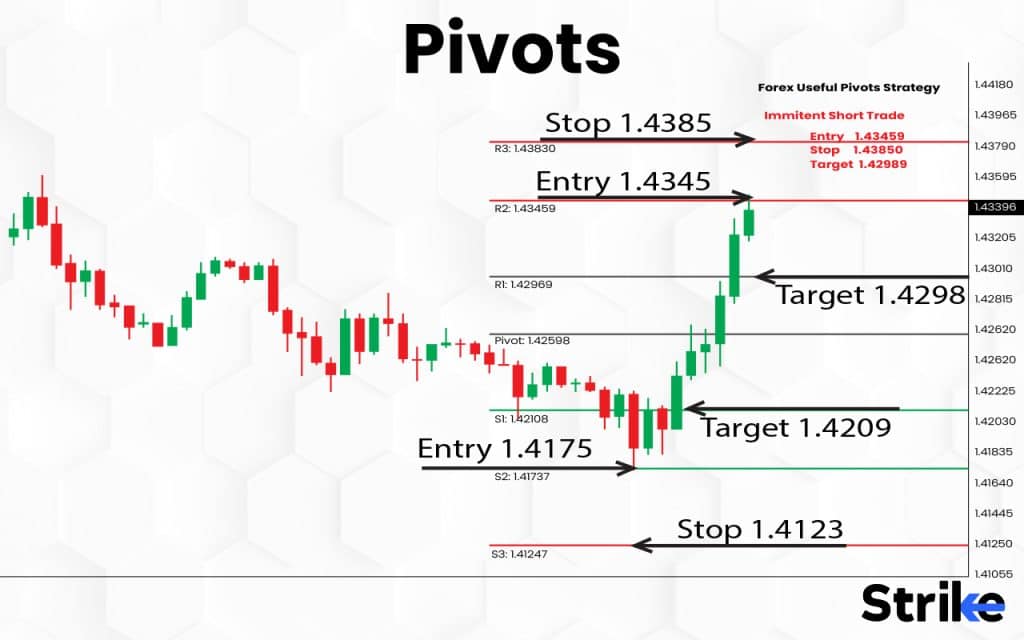
Pivots act as potential reversal levels where the market direction for the period sometimes changes. P represents a mid-point where equilibrium exists between bulls and bears.
Below P, S1 and S2 indicate rising demand and are supported to buy. Above P, R1 and R2 signal increased supply and provide resistance to sell. Traders use pivots to identify trades, enter orders, place stops, trail prices and book profits. Pivots are more reliable when coupled with other indicators. They are widely used for intraday and swing trading across assets. Correct use of daily, weekly or monthly pivots enhances technical analysis.
How do you do risk management in technical analysis?
Effective risk management techniques like using appropriate risk/reward ratios, portfolio diversification, strategic stop-loss orders, and proper position sizing are essential to implement alongside any technical analysis approach in order to maximize returns and minimize losses.
Traders often struggle to accept the importance of risk management due to a lot of factors. But it stands out as a very important technique that keeps a trader or an investor on the winning side of probability in the long run. For example, even a trader with 20% accuracy but a huge Risk: Reward ratio is sometimes on the winning side.
The risk/reward ratio refers to the potential profit versus potential loss on a given trade or investment. A good risk/reward ratio means the potential gain is larger than the potential loss. For instance, you have a 1:2 risk/reward ratio if your stop-loss to restrict losses is only Rs. 500 and your possible profit objective on a transaction is Rs. 1000. This is generally considered favorable. Technical analysis is used to calculate entry, exit and the maximum loss one bear on a certain bet, known as a stop loss.
You will be able to use technical analysis to create stop-losses and profit objectives based on levels of support and resistance, indicators, and chart patterns. This allows you to quantify your risk versus reward before entering a trade. Traders should aim for at least a 1:2 risk/reward ratio on most trades. Higher reward potential compared to risk helps overcome the inevitable losing trades.
What is an example of doing technical analysis?
Moving averages provide useful signals about Infosys’ trend. The 50-day simple moving average (SMA) is a short-term trend indicator, while the 200-day SMA shows the long-term trend. If Infosys’ stock price is trading above both the 50-day and 200-day SMA, it indicates an uptrend. Conversely, a price drop below both averages would signal a potential change in trend to bearish.
Another valuable technical indicator is the relative strength index (RSI). The RSI measures the stock’s recent trading activity to evaluate whether it is overbought or oversold. For Infosys, an RSI above 70 could indicate the stock is overheating and due for a correction. Meanwhile, an RSI below 30 implies the stock may be oversold and poised for a bounce back. Combining RSI analysis with price action helps identify potential reversal points.
Support and resistance levels, identified by analyzing Infosys’ historical price chart, also provide useful understanding. These price zones, where demand or supply for the stock has historically been strong, act as barriers that either halt price declines or stalls price increases. Awareness of these support and resistance levels allows anticipating potential inflection points in the stock’s movement.
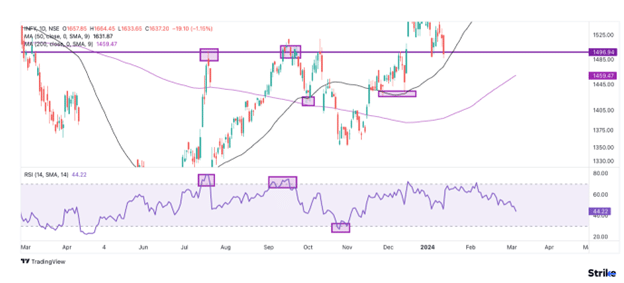
As you can see, RSI and resistance levels were combined to gain a selling signal multiple times, whereas moving averages were also used to generate buying opportunities during a pullback phase.
What are the popular strategies for technical analysis?
Popular technical analysis approaches include trend trading, range trading, breakout trading, reversal trading, gap trading, pairs trading, arbitrage, and momentum trading which aim to capitalize on specific price behaviors and chart patterns.
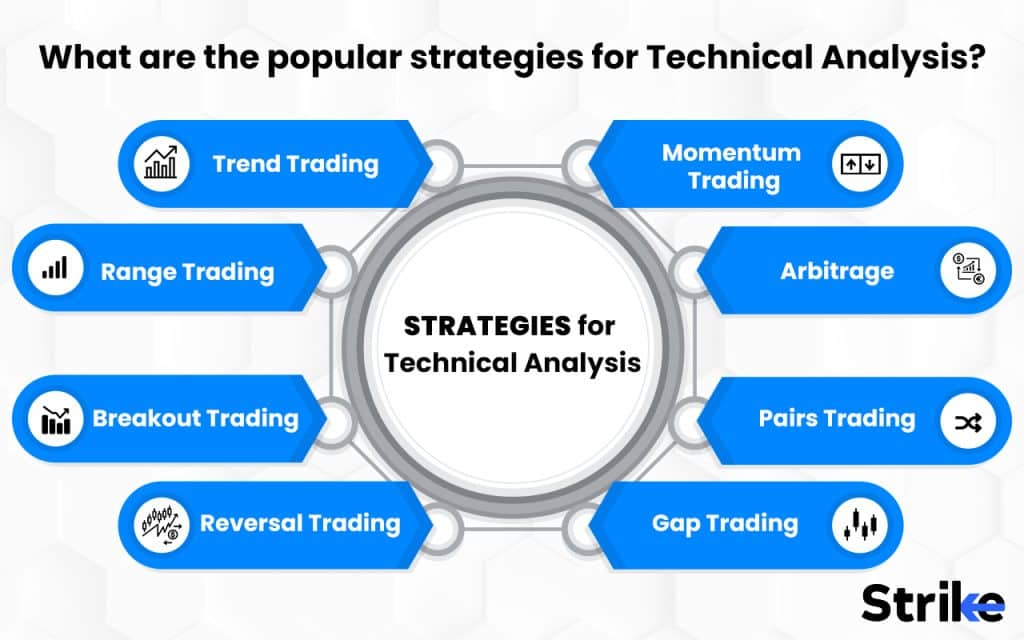
Trend trading involves taking trades in the direction of the prevailing trend. Technical analysts identify trends by connecting swing highs and lows to draw trendlines. Upward sloping trendlines signal uptrends, while downward sloping trendlines signal downtrends. The idea is to buy in uptrends and sell in downtrends until the trend reverses. Precise bets are taken with probable pullbacks for a good price.
Range trading aims to profit from prices oscillating between horizontal support and resistance levels. Technical analysts identify range bound behavior when price repeatedly tests support and resistance over time. These boundary levels contain price action.
Breakout trading looks to capitalize on strong moves where price breaks out of well-defined ranges or chart patterns. The breakout signals pent-up energy being released as price surges higher or lower.
Reversal trading aims to profit from tops and bottoms in the market. Technical analysts identify potential reversals using price patterns, momentum oscillators, volume cues, and other indicators. For example, reversal patterns like head and shoulders, double tops/bottoms indicate trend exhaustion.
Gap trading capitalizes on price gaps between trading periods. Price gaps arise when there is a significant difference between the previous closure and the opening price. Technical analysts assess the direction of the gap, the degree of the gap, and the volume. Gaps act like magnets drawing price back to fill the empty space.
Pairs trading capitalizes on the mean reversion of two historically correlated assets. Technical analysts identify asset pairs that demonstrate strong correlational tendencies over time. Pairs traders wager on the assets reverting to convergence when the correlation momentarily diverges.
Arbitrage trading aims to profit from temporary price discrepancies between related markets or assets. Technical analysts seek pricing anomalies between an asset’s listings across different exchanges or derivatives.
Momentum trading involves taking long positions in strongly uptrending assets and short positions in downtrending ones. Technical analysts identify momentum by assessing the directional slope of the trend. Strongly sloped trends persist as other traders jump on board the momentum.
How to backtest a technical analysis strategy?
Backtesting involves using historical price data to simulate how a technical trading strategy would have performed over past market conditions, evaluating key metrics like profitability, risk parameters, drawdowns, and win rates to optimize the strategy. This allows optimizing the strategy by tweaking inputs to refine the logic and improve results. Repeated iterations of coding and testing are done until satisfactory results are achieved.
Backtesting a trading strategy provides valuable confidence in its efficacy by simulating performance on historical data before risking live capital. It helps identify errors to improve the trading logic. The resulting performance statistics enable proper position sizing and risk management. Backtesting also allows practicing the execution of the system to gain experience. It also has the ability to indicate when the advantage of a plan is diminishing, allowing adjustments.
Thorough backtesting optimizes the strategy rules and inputs to create a robust, effective system ready to be implemented in live market conditions. Traders often over hype backtesting, as we learnt, backtesting definitely refines one’s strategies, but the profitability is only achieved by trading with front testing, that is, live trading with real money as concepts of psychology, emotions and risk management are experienced live only. How the trader learns to manage emotions with respect to ever fluctuating prices.
What are the top technical analysis tools used by traders?
Strike, Screener Plus, Thinkorswim, Active Trader Pro and Slope of HopeStrike are a top online technical analysis tools that are used by traders. Strike is a leading online technical analysis platform that equips traders with accurate and up-to-date market insights. By leveraging proprietary indicators and screening tools, Strike enables investors to identify profitable trading prospects and minimize downside risk. Its advanced trend identification capabilities allow users to filter stocks that are most aligned with the prevailing macro trends.
Strike’s all-in-one technical analysis solution and customized screens aim to maximize returns by spotting high-probability opportunities, derived from the platform’s sophisticated analytical models and real-time market scanning abilities. The actionable signals and proprietary methodologies offered by Strike assist traders in capitalizing on changing trends and finding the top stock picks with the greatest potential. Strike also provides specific technical analysis scanners and candlesticks scanners that may save the entire time of traders to find top notch opportunities in the market.
Why should you use technical analysis?
Traders should use technical analysis as it provides them with an accessible, probability-based framework to identify opportune trade entries and exits, understand market psychology, quantify trading systems, adapt to evolving conditions, manage risk, and ultimately gain an edge across all markets and timeframes. Technical analysis levels the playing field for traders of all experience and resource levels. By focusing purely on price action and volumes that anyone is able to see and analyze, it removes informational advantages institutions with greater access sometimes have.
The charts simply display the revealed supply and demand dynamics for a given market. Technical analysis uncovers objective, quantifiable trading signals and opportunities based on historical tendencies that are backtested for efficacy. This gives individual traders an accessible methodology to gain an edge without inside connections or advanced degrees. Additionally, technical analysis assists traders in understanding market psychology and identifying high-probability trading opportunities. Price patterns, indicators, and volumes provide insights into the battle between buyers and sellers.
Technical tools highlight potential support and resistance zones, gauge trend strength and reversals, spot emerging breakouts, and reveal ideal entry and exit levels. Trading with the prevailing market direction improves the odds of success. Technical analysis provides a probabilistic framework rather than guarantees. People who want to have a great profession in the field of the stock market and use shorter time frames to master market reading, scalpers, day traders and swing traders get deep into the understanding of price forms and patterns, effectively use the risk management and combine it with the technical expertise to win more and lose less, to achieve long term profitability as after all, markets are full of uncertainty.
What are the advantages of technical analysis?
One of the main benefits of technical analysis is its simplicity. While fundamental analysis requires an in-depth understanding of financial statements, ratios, valuation models, and other quantitative skills, technical analysis relies on basic mathematical and statistical concepts. Charts and indicators synthesize price and volume data into easily recognizable patterns and trends. This makes technical analysis more accessible to a wider range of traders and investors. The learning curve is not as steep compared to fundamental analysis.
Technical analysis is objective in nature. The patterns and indicators are based on mathematical formulas and quantifiable data points. This removes emotionally-driven decision making and bias. Technical analysis uses clearly defined rules rooted in statistics to identify trading opportunities. Either the price/volume data satisfies the criteria of a pattern or indicator or it does not. There is no gray area for subjectivity or opinion. This objectivity and rule-based approach provides a systematic framework for analyzing market behavior and executing trades.
While fundamental analysis focuses on using past financial data to determine a stock’s current value, technical analysis aims to predict future price movement. Chart patterns, trends, momentum, and other indicators are forward-looking analytics that forecast where a stock’s price sometimes is heading. This is advantageous for traders looking to capitalize on short- to medium-term price fluctuations. The predictive abilities of technical analysis allow traders to profit from upcoming swings and trends.
One of the key insights offered by technical analysis is the ability to identify overarching trends in the market or individual stocks. Trading with the trend substantially increases the probability of profitability. Strong uptrends and downtrends are easily recognizable on price charts through trend lines and moving averages. Technical analysis provides tools to confirm if emerging movements are true trends or not. Traders then confidently trade in the direction of the trend.
Technical analysis strategies and indicators enable better risk management through stop losses. Oscillators like the Relative Strength Index (RSI) identify overbought and oversold conditions are used to signal impending reversals. Price patterns also provide logical areas to place stop losses, protecting capital from excessive losses. In addition, trailing stop losses sometimes lock in profits as the price moves favorably. Technical analysis provides the tools to effectively determine stop loss placement.
What are some limitations of technical analysis?
Technical analysis of the stock market is limited in its reliance on historical price and volume patterns, unable to account for changes in underlying fundamentals that sometimes alter future price behavior.
The predictive nature of technical indicators and chart patterns is not completely reliable. Technical analysis is based on the assumption that future price movements will follow historical trends and patterns. However, the stock market does not always adhere to repeatable behaviors. Unique events or new market conditions cause prices to behave unpredictably, invalidating projected outcomes. Indicators often lag in rapidly changing markets. Traders must remember technical analysis has reasonable predictive power but it’s not foolproof.
Technical signals are prone to producing false positives or negatives. Divergences between price-based indicators like moving averages and oscillators fail to precipitate a reversal. Established support or resistance levels are sometimes breached decisively. These whipsaws generate losing trades for those acting on false signals. While technical analysis aims to identify high-probability setups, traders must accept that false signals are inevitable. No indicator or pattern works 100% of the time. Managing risk is key to surviving false signals.
A common pitfall is data mining bias, also known as curve fitting. This is the result of traders adjusting indicators to show a high likelihood setup and match past data. In hindsight, it is easy to identify chart patterns, select parameters that fit previous prices, and show a perfect trade entry and exit. However, these perfectly optimized indicators often fail moving forward. Traders must be aware of data mining bias and avoid over-optimization based on limited historical data.
Technical analysis provides a static, backward-looking view of the market. Indicators extrapolate the past into the future with the assumption that current conditions will persist. However, markets are dynamic and new information changes sentiment rapidly. Technical analysis fails to account for fundamental changes that often precipitate price swings like earnings, economic data, corporate actions. This key limitation must be acknowledged.
Markets oscillate between excessive optimism and pessimism. Technical analysis struggles to account for these extremes. Oscillators simply show extremely overbought or oversold conditions but provide little guidance on how long these extremes last before reverting. Similarly, long-term trends persist for longer than normal as momentum feeds on itself. It’s challenging to determine when momentum in a market is exhausted during turning periods.
According to the efficient market hypothesis (EMH), technical analysis has no edge in a perfectly efficient market. Assets instantaneously reflect all available information and trade at fair value. In an efficient market, there are no patterns, trends, or indicators to exploit. Of course, markets are not perfectly efficient and humans do exhibit behavioral biases. But technical analysis works best in inefficient scenarios and offers minimal edge in high efficiency environments.
Is Technical Analysis a Self-Fulfilling Prophecy?
Yes. The idea that technical analysis could be a self-fulfilling prophecy is based on the logic that if enough traders use the same indicators and act on the same signals, their collective buying and selling cause prices to move in the direction suggested by the analysis.
A sense should be established that market uncertainty cannot be predicted. It is a probabilistic game, thus, a solid technical analysis technique must be combined with effective risk and emotion management to gain profitability in the long term sense.
However, it is debatable whether technical signals truly have enough impact on their own to consistently move prices based on trader actions alone. Fundamental forces of supply and demand are still the primary drivers of price in the long run. Not all market participants use technical analysis either, diluting its self-fulfilling effect. The critique lies more in technicians assigning too much predictive power to past price patterns without incorporating underlying market dynamics. Traders often underestimate the power of effective risk management and emotional management and give entire responsibility to technical analysis. Technical analysis cannot itself be a complete winning approach.
How to learn technical analysis?
Traders will be able to learn using resources like Indiacharts, Zerodha Varsity etc. For books that cater to the Indian market, consider “Technical Analysis of the Financial Markets” by John Murphy, “Mastering Technical Analysis” by Raji Reddy, and “Guide to Technical Analysis & Candlesticks” by Ravi Patel. YouTube channels like “Rachana Ranade”, “Power of Stocks” by Subashish Pani, and “Elearnmarkets” offer a wealth of tutorials and practical explanations geared toward Indian traders.
Indiacharts is one of the best resources for learning technical analysis techniques for the Indian stock markets. Indiacharts should be one of the first resources you reference when learning technical analysis for Indian stocks.
Who are technical analysts?
Technical analysts, also known as chartists, are traders and investors who base their market analysis primarily on the study of price charts and technical indicators. They analyze past price patterns and trends in the markets to predict future price movement and identify trading opportunities.
A well-known Indian technical analyst, Rohit Srivastava is the founder of Indiacharts, a popular stock charting platform. He pioneered many technical analysis techniques and algorithms used by Indian traders today. Srivastava focuses on shorter term swing trading strategies based on chart patterns, candlestick signals and other technical tools.
Martin Pring is regarded as one of the leading technical analysis educators and practitioners globally. Pring has authored several acclaimed books on technical analysis such as ‘Technical Analysis Explained’ which is considered a core text for charting. His approach focuses on momentum indicators, price pattern analysis and mass psychology.
Steve Nison is credited with introducing Japanese candlestick charting techniques to the Western world through his books and research. Nison spreads awareness about the powerful visual signals generated by candlestick patterns in stock charts. He runs the influential website Candlecharts.com focused on candlestick analysis.
Thomas Bulkowski is a technical analyst renowned for his research on chart patterns and event patterns that precede big stock price movements. Bulkowski has written reference books like the ‘Encyclopedia of Chart Patterns’ documenting historical performance statistics of major chart patterns.
John Murphy is the author of the highly successful book ‘Technical Analysis of the Financial Markets’, John Murphy is regarded as one of the foremost educators in technical analysis. He developed tools like the Relative Strength Index (RSI) and intermarket analysis that examine relationships between different asset classes.
What are the differences between technical vs fundamental analysis?
Technical analysis involves studying charts and technical indicators to identify trading opportunities, while fundamental analysis focuses on analyzing the intrinsic value of a business based on financial statements, valuation, and qualitative factors.
Technical analysts, also called chartists, examine the historical price charts and patterns of a stock along with volume, open interest and other statistical metrics. They use technical indicators and oscillators to identify trading opportunities, detecting recurring price patterns, trends, breakouts/breakdowns and sentiment shifts in the charts to profit from them. Technicals do not care about the underlying business, earnings or valuation of the company as they believe the chart incorporates all available information.
In contrast, fundamental analysis focuses on determining the intrinsic value of the business behind the stock by studying the company’s financial statements, management quality, competitive advantages, growth prospects and industry trends. The goal is to estimate the fair valuation of the company as fundamentals believe the stock price will eventually converge to this value. While technicals use price action, chart patterns, indicators and wave theory, fundamentals rely on financial statement analysis, valuation ratios, earnings quality, competitor comparisons and macroeconomics.
There is no right or wrong approach as traders combine both techniques to get a complete picture before taking trades. Technical analysis provides objective, evidence-based trading opportunities and entry/exit signals while fundamentals assess the underlying merits of the business, albeit with subjective assumptions. Technicals are more useful for short-term trades and devising a trading strategy while fundamentals better inform long-term, buy-and-hold investing.









 Previous Article
Previous Article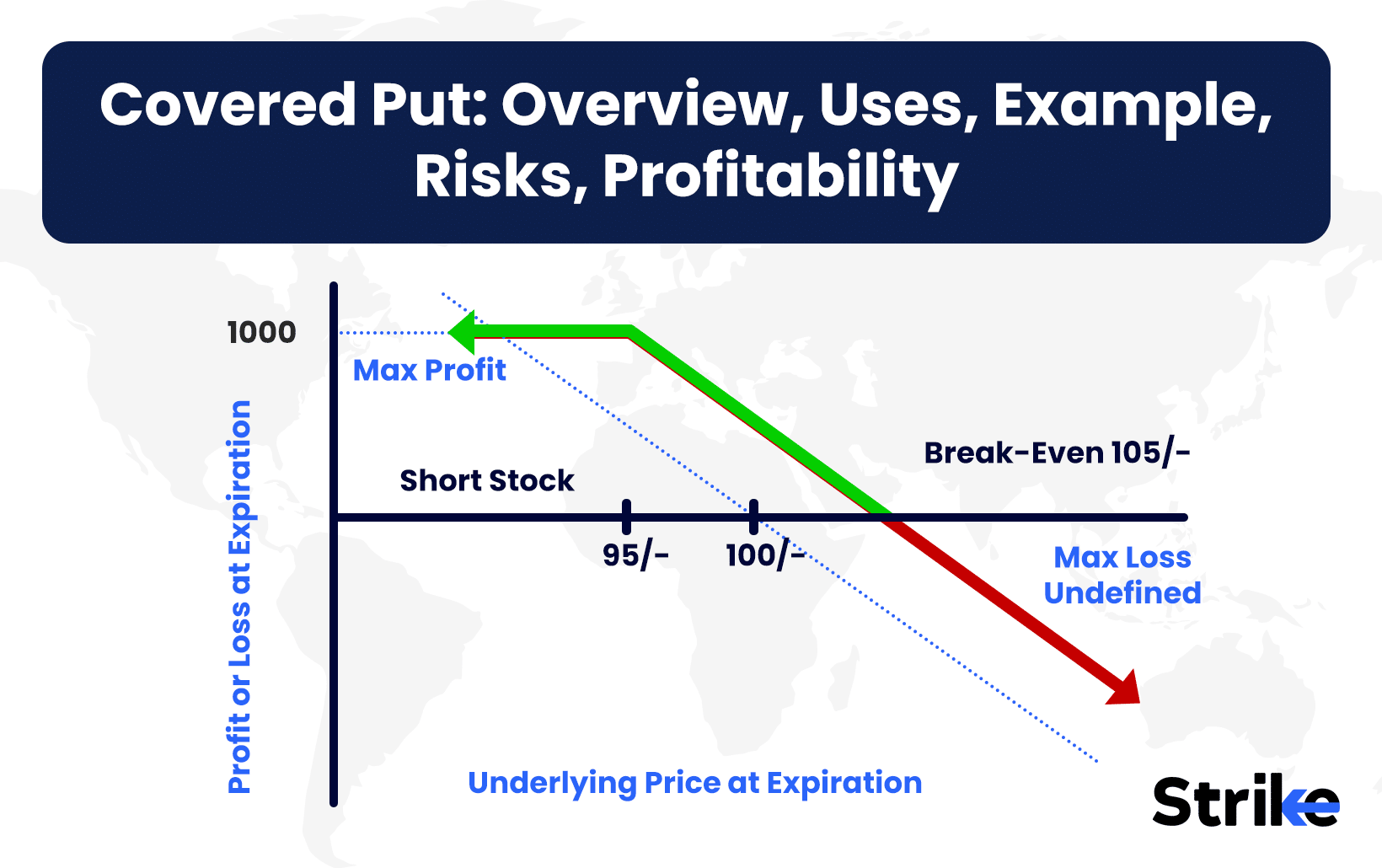


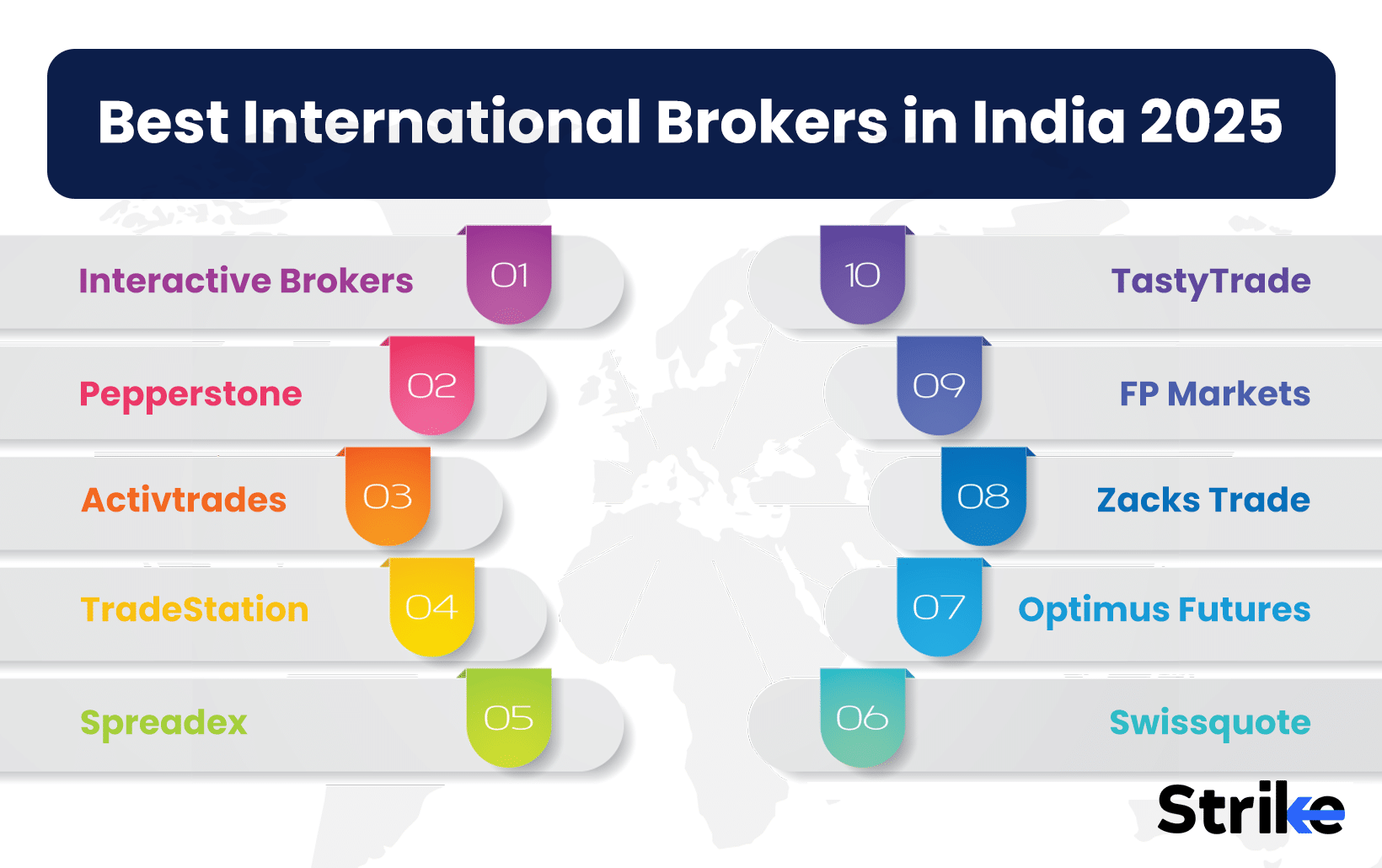
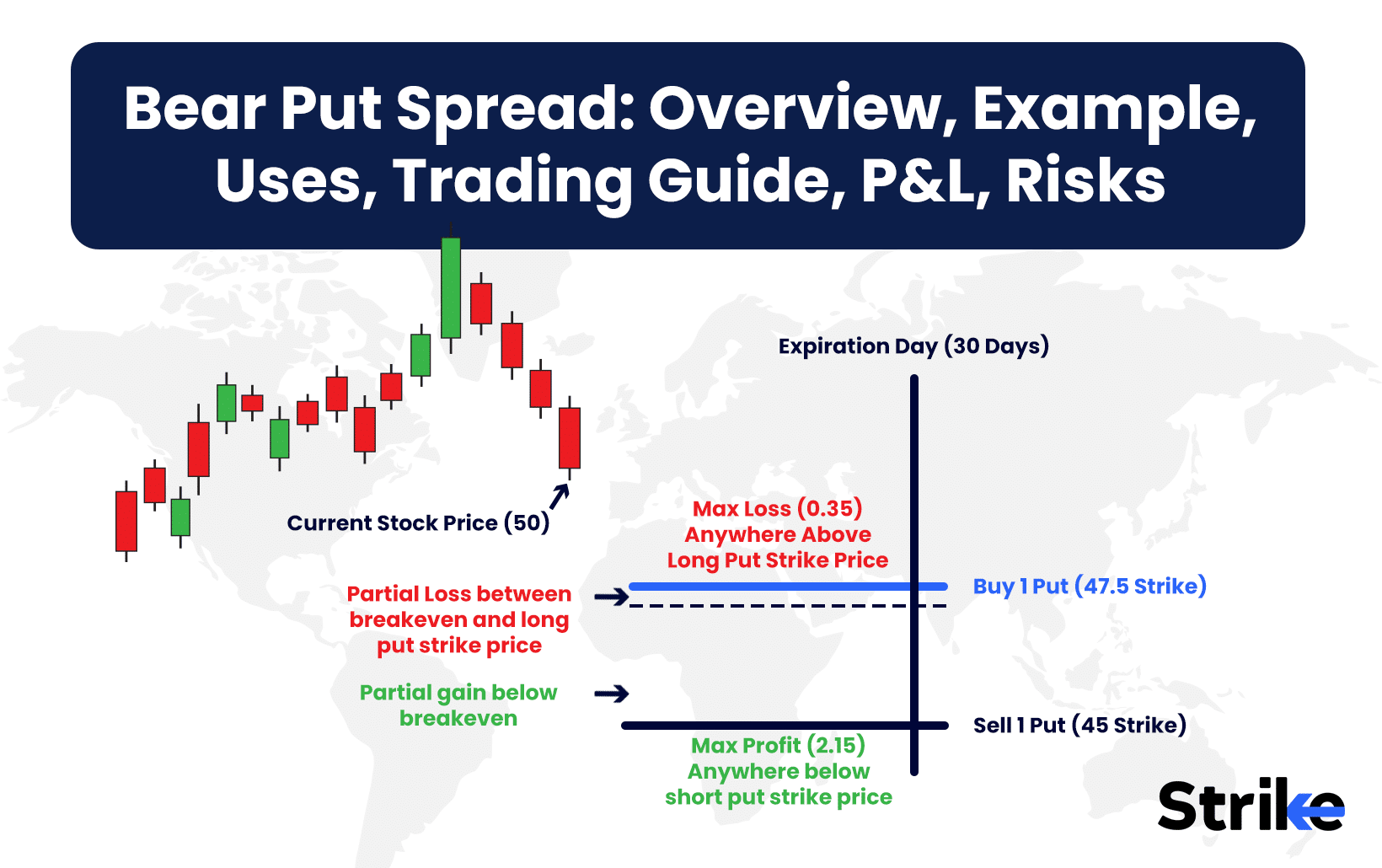
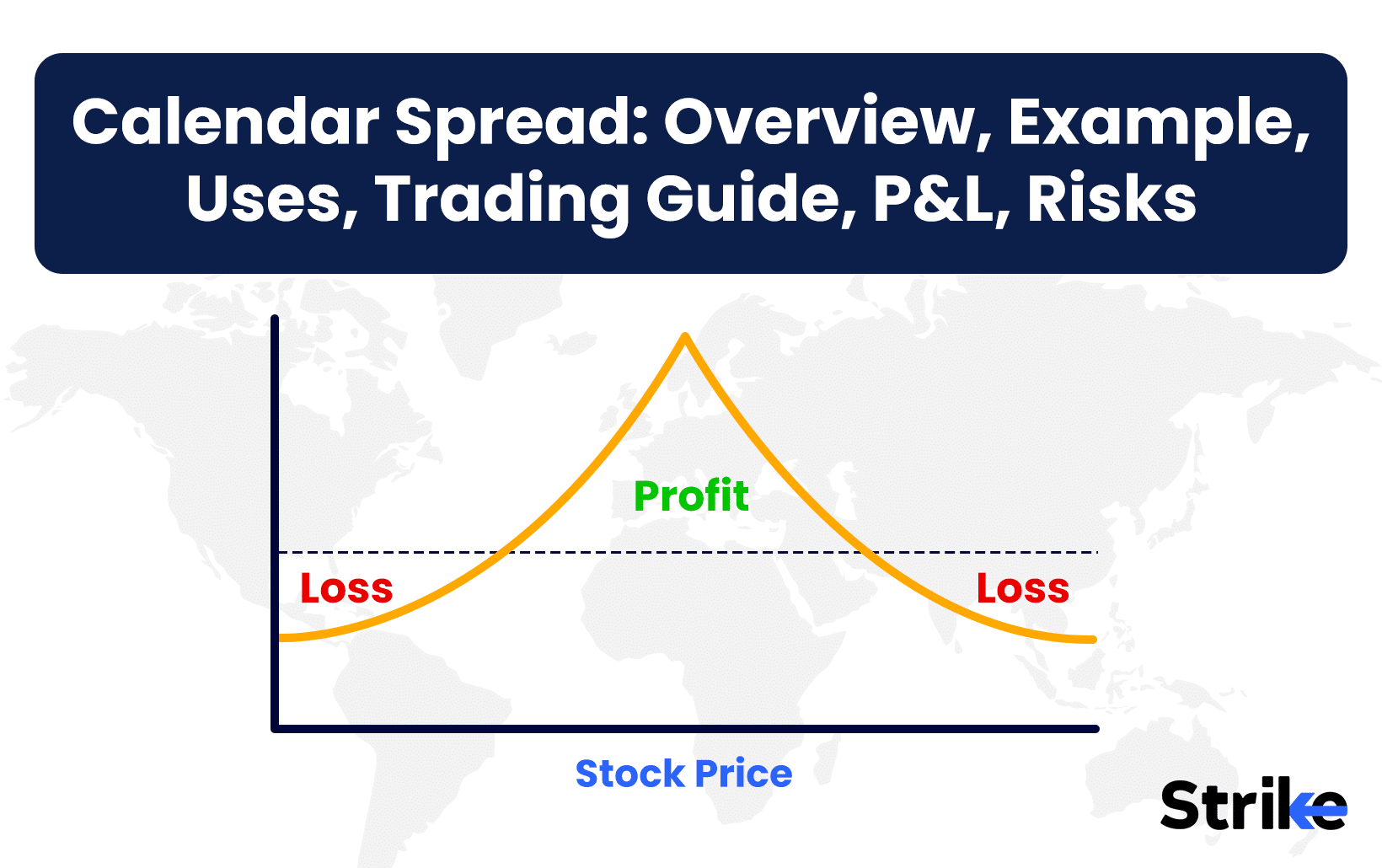

No Comments Yet